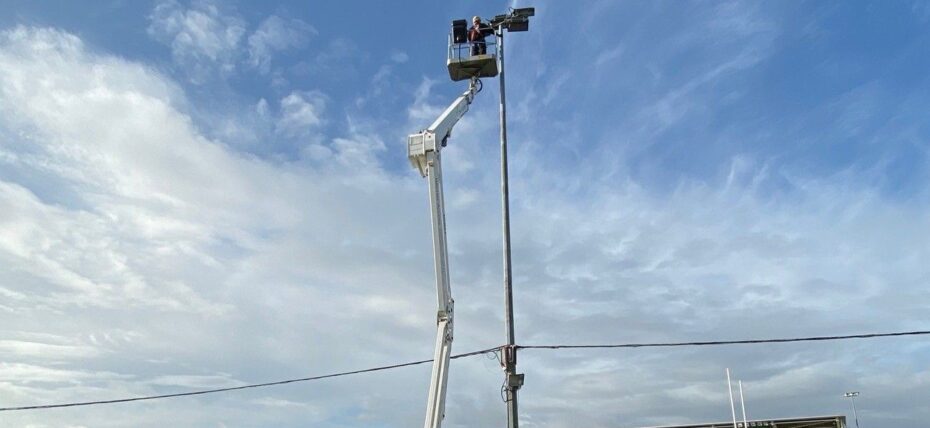
Common work at height hazards and how to avoid them
We’re looking at some of the most common work at height hazards and what you can do while working to reduce the risk.
Weather
Weather is hazardous when working at height: hot days increase the risk of heatstroke and dehydration, fog reduces visibility, rain creates slippery surfaces, and strong winds can cause platforms to topple. Pay attention to and work with the weather, stay within equipment limitations, and delay work if necessary.
Slips, trips, and falls
Slips, trips, and falls are the most common cause of accidents at work. Lower the risk by keeping pathways and platforms free of trip hazards such as cables, tools, and work materials. Always clear up any spillages straight away.
Incorrect or improperly maintained equipment
Using the wrong equipment increases the risk of accidents occurring. Likewise, failure to maintain the right equipment can lead to malfunctions, toppling, mechanical failures, breakdown of signalling systems, and chemical leakages. Carry out site surveys and risk assessments to identify the most appropriate equipment for your job and ensure you source it from responsible, trustworthy suppliers. Our IPAF+ Rental status shows we maintain all our equipment to a high standard, and we can also carry out site surveys and provide experienced operators if required. Contact us to find out more.
Improper use of equipment
Using the right equipment will only reduce risk if you use it correctly. Stay within machine limitations, avoid overloading, and avoid carrying heavy or awkward equipment. Running familiarisation training for everyone using the equipment will also help to ensure they use it properly.
Obstructions
Whether it’s cables overhead or rocks underfoot, obstructions cause problems when working at height. They can result in plant toppling over, operators falling or even being crushed. Be aware of your work environment and account for objects in the path, which may involve fitting secondary guards to keep operators safe.
Objects falling from a height
Any tools, materials or debris on platforms has the potential to fall and land on people or objects below. Take the necessary precautions to avoid this, such as using safety lines to attach tools to the platform or installing netting, boards or covered walkways. Exclusion zones also work to keep people out the way, while working tidily reduces the risk of objects falling.
Moving vehicles
Vehicles are always present on worksites, which means there’s a risk of collisions. Minimise the opportunity by clearly marking out routes and keeping pedestrians and vehicles separate. Visibility is essential – avoid blind spots that prevent drivers from seeing what is happening around them, use signage, and provide adequate lighting.
Human error
Finally, people themselves are hazards: human error plays a part in most accidents at work. While it’s impossible to avoid accidents altogether as they happen no matter how careful people are, you can manage risk by ensuring workers are competent, trained, and fit for work. Stressed, tired or distracted workers are more likely to make mistakes, so look after the mental health of everyone and don’t let anyone work at height if they are not fit to do so.
